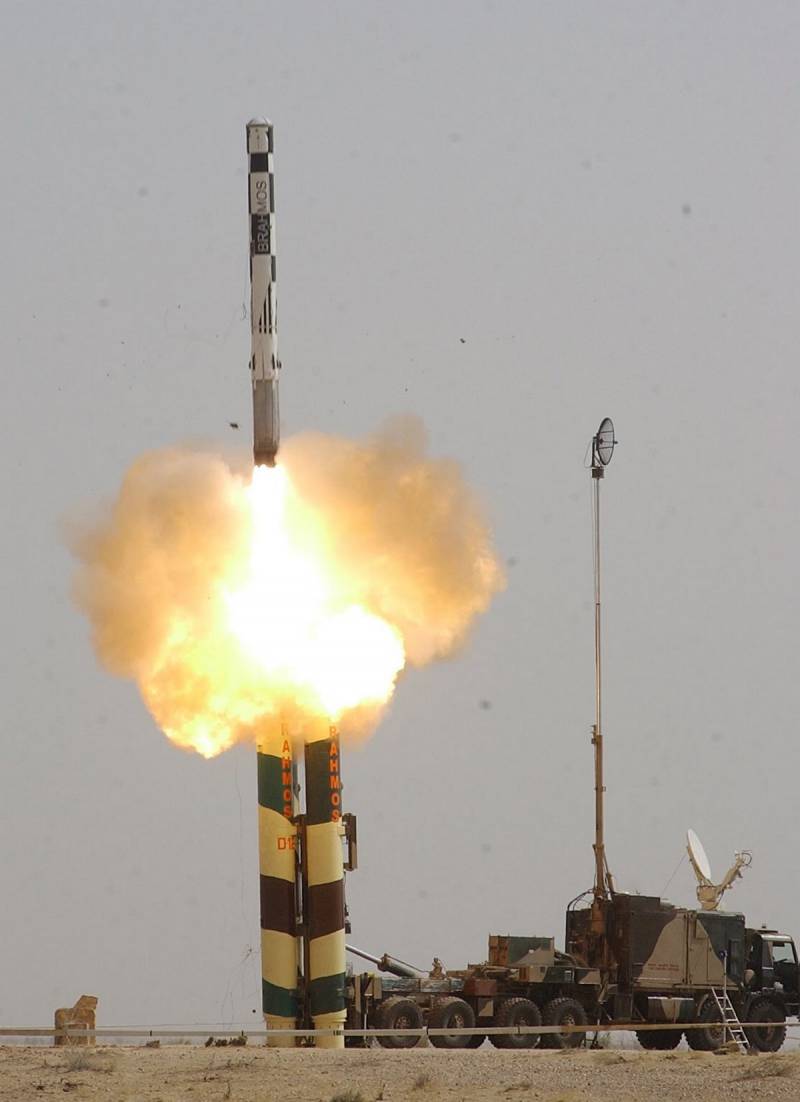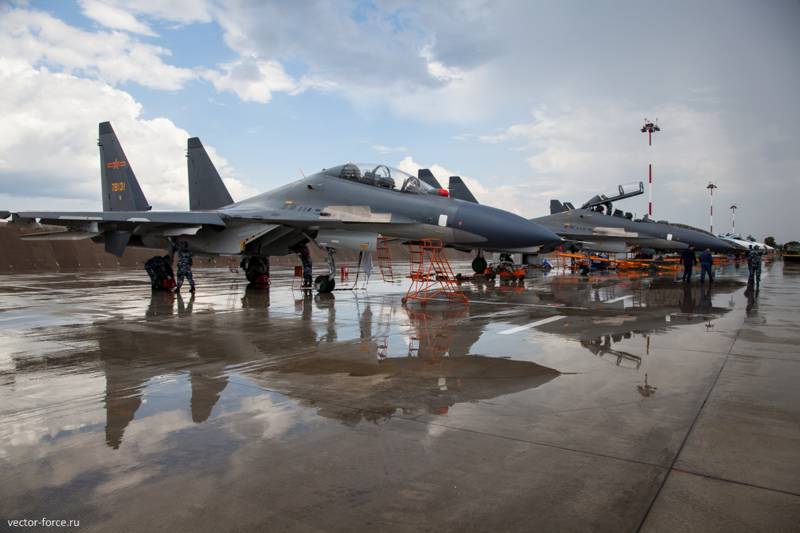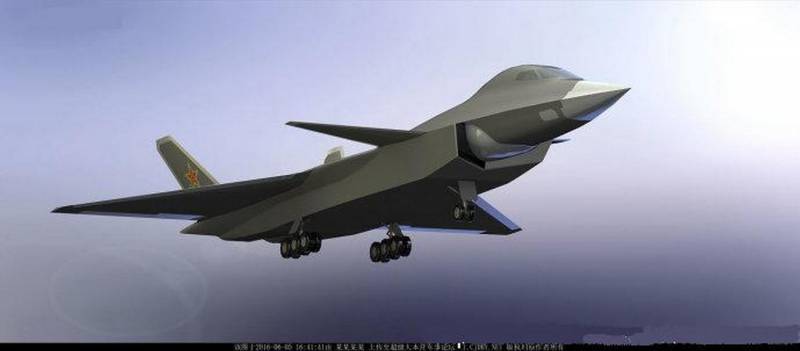Controlling the balance of power in IATR is a delicate matter: “Triumphs” for the PRC and India, “BrahMosa” instead of “Iskander”
The role of the Russian Federation in maintaining the strategic balance of the Indo-Asia-Pacific region deserves special attention, as well as detailed consideration from different geopolitical angles. For decades, the developed Asian arms market has been focused on the most advanced export modifications of military equipment of the Russian defense industry. At the same time, all equipment samples fall under a clear “inter-contract distribution”, when some products are assigned for export, for example, to China, and others - to India. This makes it possible to achieve a relative military-strategic parity of the IATR, which, one way or another, contributes to a partial detente in relations between the regional superpowers of Asia, including the small states that assist them (today this applies to Vietnam). An example of such an activity of the Russian Federation can be observed by reviewing contracts for the purchase of new Russian weapons for the PLA, as well as joint Russian-Indian programs of the Sukhoi / HAL and NPO Mashinostroeniya / DRDO companies.
Soon, the Chinese Air Force will be armed with the highly maneuverable 4 ++ Su-35S generation fighter jets, as well as the Triumph S-400 long-range anti-aircraft missile systems. The main mission of these units is to gain dominance in the air, territorial missile defense against advanced WTO weapons, as well as delivering strikes against land and sea targets. This will allow the PRC at a qualitatively new level to conceal its strategic facilities from possible attacks by the US Navy, as well as the Indian Navy and the Indian Air Force if the latter makes attempts at the MRAU at the time of a possible escalation of the territorial dispute over the Indian Arunachal Pradesh and the mountainous area in the north Kashmir. The Indian side received the armaments built aviation HAL Corporation under the Sukhoi license two-seat super-maneuverable multi-role Su-30MKI fighters equipped with radar with PFAR N011M. These machines, which are present in the Indian Air Force in the amount of more than 240 fighters, which will be able to withstand the Chinese J-5A J-10, J-11B / S, as well as Su-15SK / UBK and Su-27MKK / MK30, equipped with more primitive radar N2VE with Kssegren antenna array. The avionics of these fighters will be updated by installing new radars with AFAR, but this will take about 001 years. The 10th-generation J-5A fighters of the PRC will also go into service, but India is not going to lag behind.
The most ambitious Russian-Indian project of the super-maneuverable fighter 5 generation FGFA remains in force. Created on the basis of the T-50 PAK-FA, the Indian version of the promising aviation front-line aviation complex will embody the most progressive developments of our KLA, as well as the Indian HAL, due to which the combat qualities of the new aircraft must reach a level approximately between T-50 and F -22A "Raptor". The upcoming order from 200 single and 50 double FGFA will be able to completely fend off the threat from promising Chinese fighters, which confirms the version of the desire of the Russian Federation to preserve the military balance in the IАТР. But these are not the only examples of Russian technology and the element base that make a huge contribution to the combat capability of the states of this region.
Many promising high-precision missile systems, tactical aviation avionics and other network-centric systems of the 21st century will not be available for purchase even by the most friendly Moscow states for many years, since their future foreign policy vector is almost unpredictable under current conditions: it’s worth analyzing A. Lukashenko’s statements regarding the conflict Donbass and Novorossia Armed Forces, which have been defending LDNR from Ukrainian aggression for more than 2 years, draw conclusions. The data prohibited for export, weapons include unique operational-tactical missile systems "Iskander-M / K". So, Sergey Chemezov, general director of Rostec state corporation, said in an interview with Kommersant-Vlast that Saudi Arabia is not an exception to the rule, and the contract for Iskanders will not be received. Everything is absolutely logical here: the “Arab coalition” plays against the Syrian army and the Russian military contingent in Syria, and also poses a serious threat to Iran in the Persian Gulf, and even theoretically cannot get OTBR capable of overcoming any known anti-missile defense systems. “Iskander” and India will not be able to receive, while such complexes are also necessary for it, because under the western side it cooperates with China, which is far from friendly, Pakistan. But Delhi was lucky more. Since 1998, the Defense Research and Development Organization (DRDO) and the NPO Mashinostroyenia have been producing and improving the BrahMos PJ-10 supersonic anti-ship missile system, which is the main strike unit of the Indian Navy and Air Force. This is the only tactical missile in the Indian army that can guarantee more or less adequate protection against the PLA if a regional conflict breaks out in the future.
Back in April, 2016 of the year, many online publications, with reference to the resource defensenews.in, flew around news on the creation by the Indian Air Force of two reinforced anti-ship squadrons (aircraft wings) consisting of 40 Su-30MKI multi-role fighters carrying 3 “BrahMos-A” anti-ship missiles at 120 suspension points. The official goal of creating an advanced anti-ship aircraft wing was not disclosed, but it is well known that it was formed to contain the Chinese strike groups (KUG), which include the best destroyers of the URA Navy of China Type 052C and Type 052D. The number of Su-30MKI allows to increase the number of anti-ship missiles airborne-based to 450 - 750 units, which will make it possible to deal even with more advanced Chinese NK fleet. Hindus work for many years. But there is not only BrahMos-A, but also many other versions of the advanced export Onyx, among which there are modifications for use on the ground theater.
In addition to the ship-based BrahMos to destroy the enemy’s surface and ground targets, as well as coastal PKRC based on PJ-10, a supersonic operational-tactical ground-to-ground BrahMos was also developed, which was successfully tested on 27 in May 2016. The first thing that catches the eye is the accuracy of the BrahMos hitting the vertical canvas of the vertical brick target: the photo shows that the CEP does not exceed 3 m, i.e. small ground objects can be destroyed. High airspeed (about 2600 km / h) and a mass of 2500 kg make it possible to achieve a staggering kinetic energy equivalent to the detonation of 156 kg of TNT, plus penetrating warheads of 300 kg. The unique LTHs of this rocket, achieved with the help of a ramjet engine with an 400 kgf, can partially compensate for the main flaw of the rocket with a low-altitude flight profile - the 120 km range. At low altitudes (“BrahMos” fly at altitudes from 10 to 50 m depending on the terrain) fuel consumption triples, but the chance of an enemy missile defense breakthrough increases dramatically. For example, let us give the Indian state of Arunachal Pradesh, which is the main subject of the territorial dispute between China and India.
The state is represented by the complex mountainous terrain of Southern Tibet with a lot of river valleys cutting through it, the main of which is the valley of the central river Brahmaputra (it is significant that the first syllable in the name PJ-10 “BrahMos” is taken from the name of this river). A supersonic flight at an altitude of only a few tens of meters at a speed of 2,5M over an area with numerous elevations and lowlands makes it difficult for them to intercept dozens of times by intercepting air defense missile systems and enemy systems. In addition, the possibility of detecting such objects by existing Chinese airplanes such as KJ-2000, as the BrahMosa, every now and then, will dive into the shadow of mountain ranges and peaks, and fly closer to the Indian state to open a review at low altitudes. parts of the (at the foot of the mountains) Chinese aircraft RLDN opportunities not present, since the region will cover the division C-400 "Triumph" and tactical fighter aircraft.
China can counterpose in this direction, in the event of an escalation, several C-300PS / PMU-1 anti-aircraft missile systems, a couple of C-400 divisions and many modern Chinese complexes like HQ-9 and HQ-16, which, although a very serious defensive stronghold, from hundreds of suddenly departing because of the unpredictable mountain radio horizon, “BrahMos” is unlikely to save. In addition, various composite radio-absorbing materials were used in the design of the PJ-10 case, which reduced the EPR of the rocket to 0,2 — 0,3 and m2. As if someone was not surprised, but even a dozen displayed due to the neighboring hillside "BrahMos" do not leave the slightest chance of any C-300PS or C-300PMU-1, and only the "Triumph" will be able to get out thanks ARGSN missiles 9M96E / E2 and target designation of DRLOU aircraft, which, under well-established circumstances, will be able to issue the coordinates of PJ-10 to the 55-6E PBU of the Chinese "Four-Hundreds". To some extent, the BrahMos can replace the Iskander-M / K OTRK, and in some moments even surpass it. So, for example, the flight speed of the 9М728 cruise missile of the Iskander-K complex is about 945 km / h, which causes concern in the conditions of the prospective enemy air defense systems. The flight range of the ground-based BraMos can be increased by introducing a mixed or high-altitude flight profile into the INS (when the rocket goes to the 15-kilometer “slide”): due to reduced fuel consumption, the range can reach 180 - 200 km, but will increase proportionally danger of interception by enemy air defense missiles. Why not 290 - 300 km, as in aviation modification? Yes, because when starting from a ground-based installation, the PJ-10 spends a significant portion of the fuel at the time of ascent in the dense layers of the atmosphere, while the aviation engine turns on the cruise engine already 10 km above the surface.
The export of modern Russian military technologies to China and India at the same time contributes to the establishment of a geostrategic equilibrium in the region, a similar situation is observed with Vietnam, but one should not forget that it is very undesirable to “replay” here with one and the other “player” since both Delhi and Hanoi continue close naval cooperation with the United States, Japan and Australia, who will always with great pleasure support any anti-Chinese mission, arguing it with aggressive actions of the Middle Kingdom in relation to A revision to the island archipelagoes Spratly and Diaoyudao, as well as "warning the world about the Chinese threat" for the entire Asia-Pacific region. And the total superiority of the military capabilities of the above US allies in Asia over China does not imply anything good for Russia. It cannot be denied that we need to “look after” the actions of the PRC regularly and very carefully. Yes, we have significantly different geostrategic ambitions in the Asia-Pacific region about the Chinese, but the general defensive concepts in the eastern strategic direction of the Eurasian continent and in the Russian Federation and in China are almost the same. As the main threat to our states are the US Navy, a minor - the Japanese Self-Defense Forces. Not being a single naval compound, the Russian Pacific Fleet and the Chinese Navy in any case represent the only decent Pacific “backbone” capable of well “extinguish” American ambitions in the APR, the same can be said about the Far Eastern air regiments of the Eastern military district. Had the VBO and the PLA alone in a geographical location, it would be ten times more difficult to counter the American threat. But it turned out that our conditional front is common, the Pacific theater is also common, and it would be very stupid not to use this advantage for our own safety.



Information